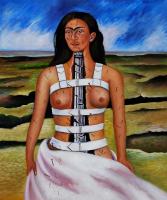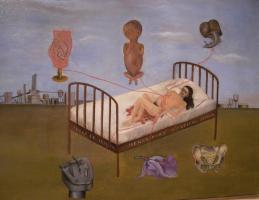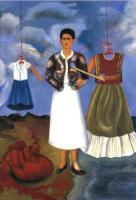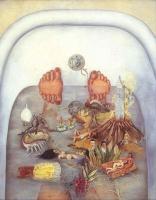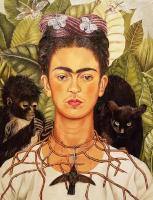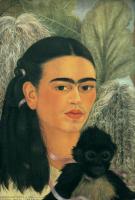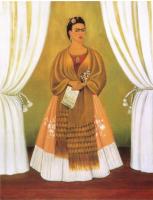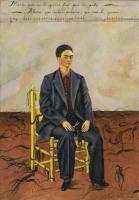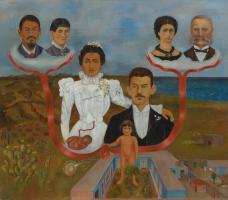Frida Kahlo
The Mexican artist and feminist icon was a performance artist of paint, using the medium to lay bare her vulnerabilities while also constructing a persona of herself as an embodiment of Mexico’s cultural heritage. Her most famous works are the many surrealistic self-portraits in which she maintains a regal bearing even as she casts herself as a martyr to personal and physical suffering—anguishes rooted in a life of misfortunes that included contracting polio as a child, suffering a catastrophic injury as a teenager, and enduring a tumultuous marriage to fellow artist Diego Rivera.
She was born in Coyoacán in Mexico City and grew up at what was called “The Blue House”, or La Casa Azul, which was her family home. Kahlo suffered numerous hardships in her life, and the most notable was a bus accident in 1925, which left her with multiple broken bones and fractures and a punctured uterus and abdomen.
She started painting after her accident, but she was always interested in art; her father was a photographer, and Kahlo would assist in his studio as well as learn drawing from Fernando Fernandez, who was a print-maker and friend of her father’s. Kahlo produced numerous notable paintings throughout her career, all inspired by her rich inner world as well as her passion for politics, activism, and her heritage.
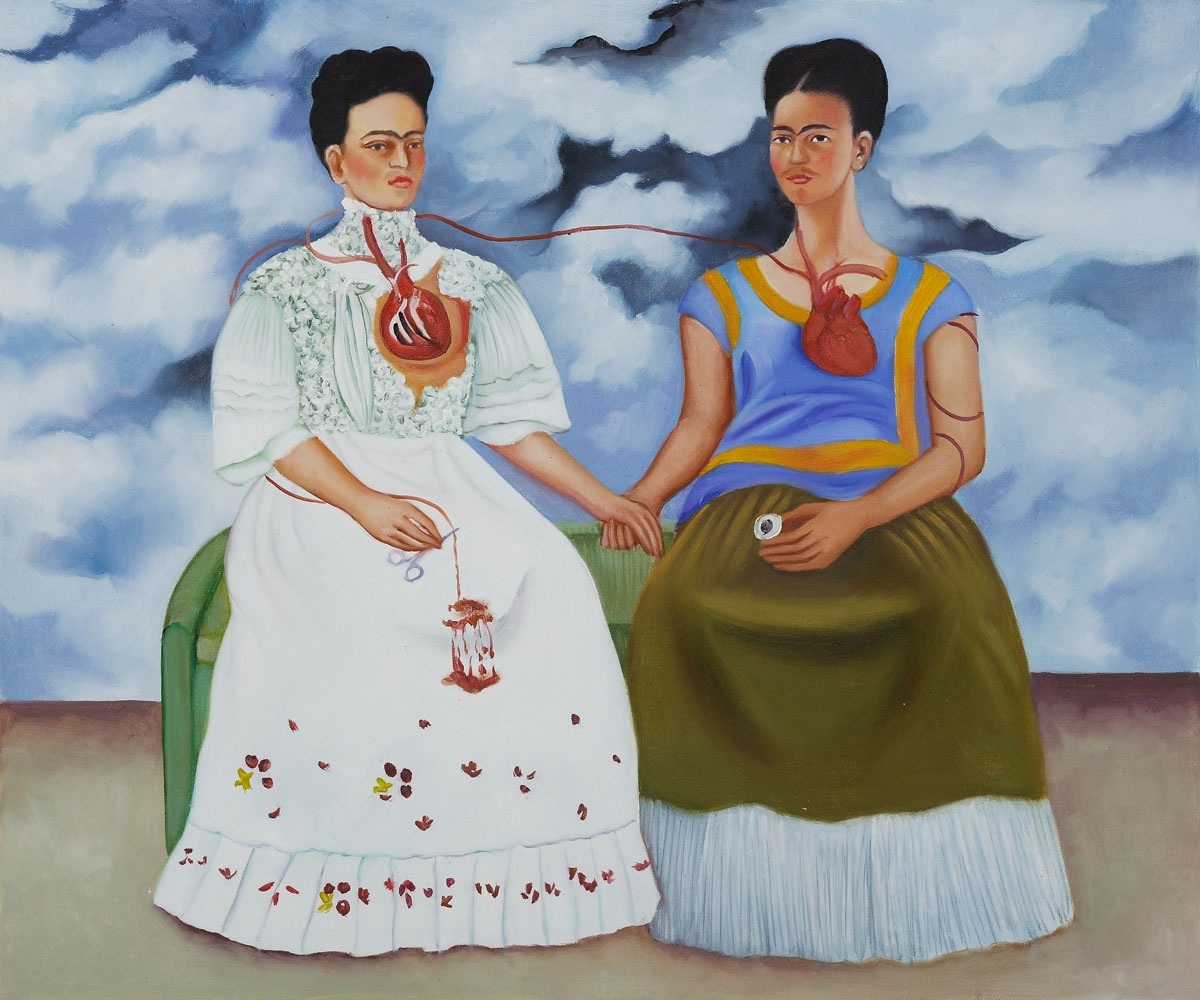 The Two Fridas was the first large-scale work done by Kahlo and is considered
one of her most notable paintings. It is a double self-portrait, depicting two
versions of Kahlo seated together. One is wearing a white European-style
Victorian dress while the other is wearing a traditional Tehuana dress.
The Two Fridas was the first large-scale work done by Kahlo and is considered
one of her most notable paintings. It is a double self-portrait, depicting two
versions of Kahlo seated together. One is wearing a white European-style
Victorian dress while the other is wearing a traditional Tehuana dress.
Some art historians have suggested that the two figures in the painting are a representation of Frida’s dual heritage. Her father, Guillermo Kahlo, was German; while her mother, Matilde Calderon, was Mexican.
Both Fridas show an open heart. The heart in the Mexican Frida is healthy whereas the heart of the European Frida is open and cut. An interpretation of this is that it not only shows two separate personalities but indicates the constant pain that Frida is going through.
Although the two figures appear separate, a vein connecting the two further symbolises that despite the differences in the two figures they both make up one Frida; together they make the self-portrait.


